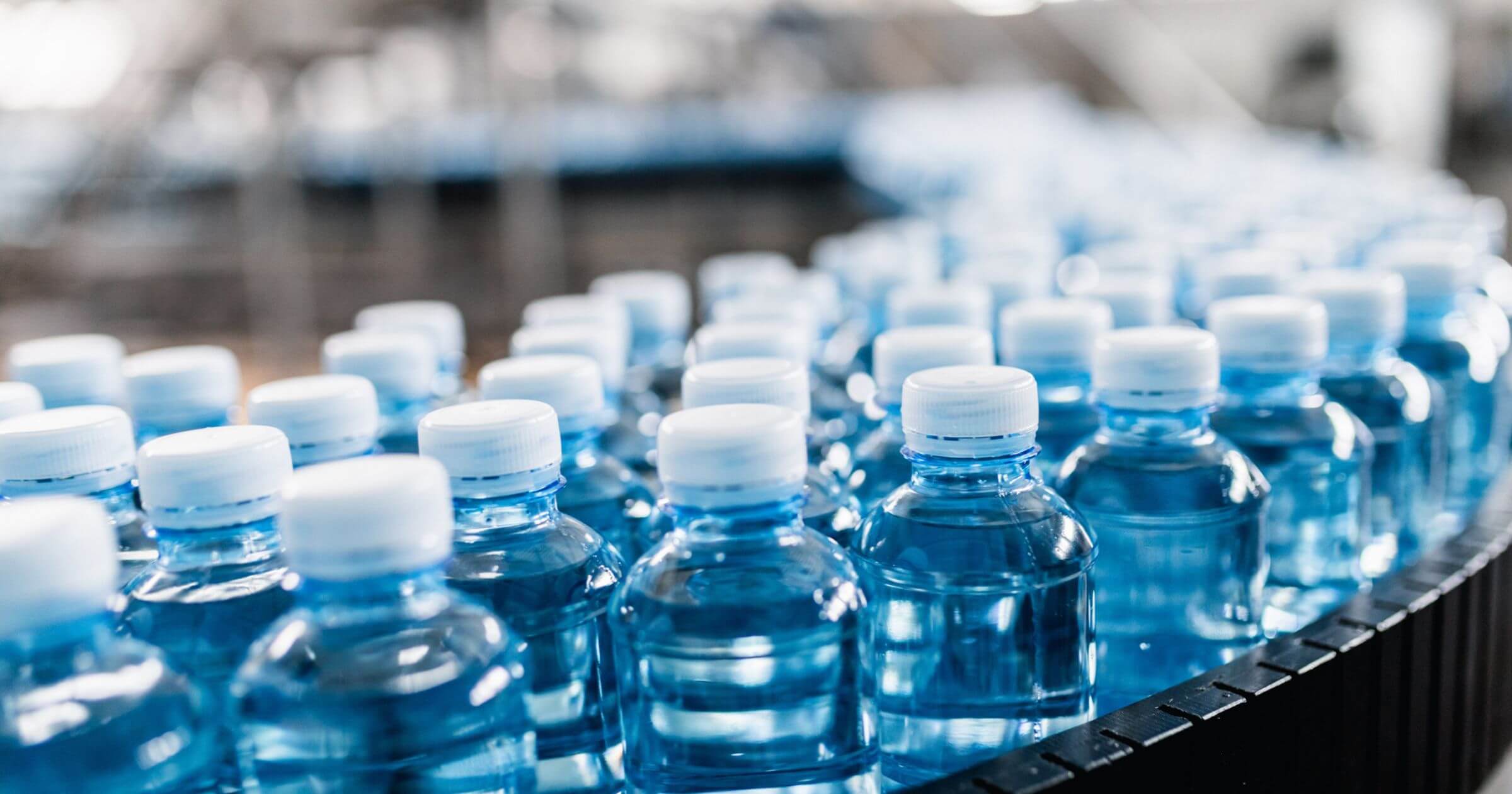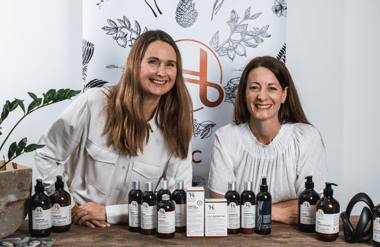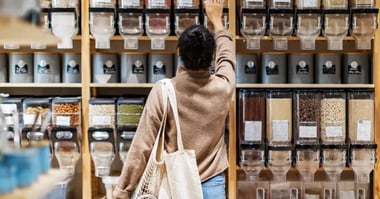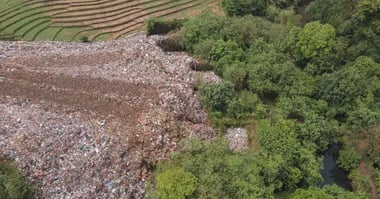
Tamara Davison
Tamara Davison is a journalist who specializes in sustainability and the environment. Reporting from around the world, she's seen firsthand the direct impact waste is having on coastal communities and our oceans. As a diver trained in ecological monitoring, the changes Tamara has seen in marine habitats inspired her to action. She's previously written for The Guardian, The Independent and the Evening Standard. She's also produced environmental documentaries for EuroNews.
Despite the growing demand for plastic packaging, current strategies for managing waste are falling short. Each year, the world churns out 141 million tonnes of plastic packaging (Wrap, 2023).
In other words, while we struggle to deal with plastic waste, at least one-third of it ends up leaking into our environment, according to the United Nations Environmental Program.
To tackle our planet’s plastic problem head-on, we must arm ourselves with knowledge — and businesses need to take the lead. It’s essential to understand why plastic packaging is so troubling, as well as how business leaders can cut back on it — luckily, you can do just that by reading this article.
Want to find out how your brand can reduce plastic waste? Check out our guide on Capturing the Conscious Consumer, where you can find the benefits of how to introduce a sustainable strategy, advice on how to do this effectively, and ways CleanHub can help you with the transition.
What's on this page?
01 | Top ways businesses can reduce plastic packaging02 | Advances in plastic packaging innovation
03 | Can the circular economy combat plastic packaging?
04 | What are the different types of plastic packaging?
05 | What's the problem with plastic packaging waste?
06 | Summary
Top ways businesses can reduce plastic packaging
There are lots of sustainability tips out there, but if you want to know how to reduce plastic use, you’ve come to the right place.
You'll be surprised to hear that it’s not all doom and gloom. To reduce plastic packaging, we’ll need a multi-pronged approach.
There are steps that consumers, business leaders, manufacturers, and policymakers can all take to reduce plastic packaging and ease the pressures on existing recycling initiatives. We've listed the top ways below.
1. Embrace reusable packaging
As consumers, the best thing we can do is rethink the way we access packaged products. For example, by carrying around a refillable bottle and using refill stations, we can reduce the demand for products sold in plastic bottles.
But what can businesses and manufacturers do to lean into reusable packaging?
First and foremost, they should listen to their audience. The rise in conscious consumerism is only increasing as the years go by, with 86% of consumers wanting more sustainable and equitable products — but brands will still need to fight for their spending power.
When it comes to reusable products, businesses need to introduce initiatives to encourage consumer engagement — if a product requires significantly more effort, buyers are more likely to look elsewhere. In fact, although 85% of people want to buy products in reusable packaging, only 16% of people actually engage with reusable items.
This is why many brands have started introducing 'bring-back' schemes, which reward customers for reusing tubs and bottles. For example, beauty giant Lush states that its customers reused/returned an estimated 720,000 items in 2022 alone, thanks to its 'Bring It Back' scheme.
2. Manufacturers can explore sustainable alternatives
Some products simply can't avoid having packaging — whether it's medical supplies, liquid items, or safety equipment. But that doesn't mean that companies manufacturing these products should stop looking for alternatives.
The most common solution for brands at the moment is using packaging that is made from already recycled plastic — this way, the items can remain protected but manufacturers aren't relying on more raw materials. However, companies should also be looking into biodegradable solutions where possible, and there are plenty of new innovations in this space.
For example, the startup Bioface creates biodegradable cutlery made entirely from disposed avocado seeds, and Australian company Fungi Solutions, which mixes fungi with organic waste to produce compostable packaging.
3. Business owners can look into packaging assessments
Not sure where to start when it comes to reducing plastic packaging in your business's production line? Don't worry, you're not alone.
We recently spoke with packaging expert Dan Coppins, who suggested the best way for brands to start this process is by having a packaging assessment from an expert. They can review what the brand's packaging looks like, and assess how to make the production line more sustainable.
He goes on to explain, "We'll then re-engineer and cost engineer to ensure that it is cheaper where possible and more efficient in everything that does — that's carbon efficient, energy efficient, and time efficient."
Want to get the ball rolling? Start by getting a packaging assessment from our experts. Once we’ve set up a call, we’ll analyze areas of your business that generate excessive waste, and any alternative materials you could consider in your packaging.
3. Governments can introduce more plastic-focused legislation
Governments around the globe have a key role to play when it comes to reducing plastic packaging — and the main way they can do this is by introducing more legislation around packaging and waste management.
This is why many governments, including the UK, have introduced Extended Producer Responsibility (ERP), which essentially holds companies accountable for the waste their products produce. By introducing more laws and tightening EPR restrictions, we can cut unnecessary packaging from the source and drive down the idea of a throw-away culture.
Some governments have also started implementing bans on certain types of single-use plastic. For example, the UK banned single-use plastic cutlery, balloon sticks, polystyrene cups, and food containers in 2023. The supply of single-use plastic plates, trays, and bowls has also been restricted.
By implementing these new laws and restrictions, businesses have no option but to look to more sustainable alternatives. The caveat is that some brands might struggle with additional costs, which is why some authorities are also providing financial support during the transition.
5. We can all spread the word and encourage education
We can all do our bit to reduce plastic pollution — and one of the easiest things we can do is spread the word.
It may sound simple, but actively talking among our communities about reducing plastic packaging can have a significant impact.
Individuals can do this with their neighbors, communities, schools, and work colleagues. By doing this, we might even discover collaborative ways to reduce plastic packaging, such as bulk buying items and sharing them with others.
As for brands? Speak up about any initiatives your company is doing to reduce plastic waste, educate your workforce on the impact this is having, and share thought-provoking posts with your customers.
We recently carried out a survey in the beauty space and found that 69% of respondents suggested that brands should be encouraging their audience to adopt environmentally friendly behaviors. So by educating your audience, you could gain even more appreciation and admiration.
Advances in plastic packaging innovation
All of the initiatives we just mentioned are the building blocks of something much bigger: a circular economy. To close the loop on packaging materials, we need to carefully look at how we collect, sort, and process plastic packaging. And ensure that we make those processes as easy as possible by the time we design the products.
Luckily, advances in plastic packaging innovation have come in leaps and bounds. There are now many projects that focus on reducing waste by encouraging recyclability from the outset.
Research projects such as the Digital Watermarks Initiative HolyGrail 2.0 are exploring ways to facilitate plastic recycling at scale.
The project, backed by the Alliance to End Plastic Waste, is working on digital watermarks for plastic products that can help enhance sorting and recycling. This would work as a ‘recycling passport,’ providing valuable information about what packaging is made from to help enhance processing and recycling.
There are also new recycling methods like enzymatic recycling that can revolutionize the way plastic waste is handled.
Conventional recycling is limited because each cycle reduces the quality of the plastic. Removing such limitations, enzymatic processes create new 100% PET products that can be recycled without impacting quality. This new disruptive technology aims to accelerate the circular economy transition.
Can the circular economy combat plastic packaging?
A circular economy is underpinned by the idea that plastic packaging never becomes waste in the first place — it focuses on creating products and packaging with reuse in mind. What’s more, it encourages the constant flow of materials, eliminating the linear trajectory that would otherwise lead to a landfill.
Realistically, a circular economy won’t happen overnight (as much as we wish it could). However, we can achieve impactful plastic packaging solutions by shifting our focus toward the building blocks of circularity.
And making this transition would have a hugely beneficial impact on our planet. In fact, it's estimated that implementing circular economy strategies could reduce the world’s greenhouse gas emissions by 39% by 2032.
Although single-use plastic would be out the window with this system in place, plastic might still have a role to play. Packaging expert Dan Coppins explains:
"The reason that plastic [in the UK] is particularly good, is because if you can make it a monomer material, which is just one polymer, it can be recycled several times in multiple ways, to ensure that it gets reused, as opposed to disposed of. And this is the whole point of what a lot of people in the industry are working towards: the circular economy."

What are the different types of plastic packaging?
(Single-use) plastic isn’t all the same. In fact, there are several types commonly used in packaging.
If you’re wondering what plastic packaging can be recycled, you should start by identifying what type it is. That’s because each type of plastic has different properties that determine if it can be recycled or not.
We've listed some of the most common types of plastic packaging below.
Polyethylene Terephthalate (PET)
PET is a common type of plastic used to store food and drink products. Its chemical makeup means it’s water-resistant, lightweight, and shatter-proof, which adds to its popularity.
Identified by a number 1 recycling logo, PET can be recycled.
High-Density Polyethylene (HDPE)
HDPE is a type of durable plastic that’s also used for packaging. HDPE holds more corrosive liquids and serves as the go-to material for heavy-duty bags.
You’ll usually find HDPE in semi-transparent or white bottles, identifiable by the number 2 recycling symbol.
Polyvinyl Chloride (PVC)
While not commonly used in packaging because of toxicity, PVC is still an important element in the plastic family. Manufacturers often use this heavy-duty plastic to make anything from the plastic piping under your sink to window frames.
PVC, identifiable by the number 3 recycling symbol, can be ground for reuse. At the moment, PVC is one of the least recycled plastics.
Low-Density Polyethylene (LDPE)
LDPE is one of the most common types of plastic packaging. Transparent and resistant to moisture, it's a perfect candidate for plastic bags and plastic film. Identified by the number 4 recycling symbol, LDPE is difficult to recycle and one of the most lethal plastic objects to marine wildlife.
Polypropylene (PP)
Polypropylene, known as being non-toxic when heated, is popular packaging for things like microwave meals, as well as plastic straws. This type of plastic packaging, identified by the number 5 recycling symbol, is recyclable multiple times over.
Polystyrene (PS)
As it has a high melting point, you’ve likely encountered polystyrene (also known as styrofoam) as foam food trays and hot drink cups. Unfortunately, polystyrene is also difficult to recycle and can release harmful chemicals into the environment when disposed of improperly.
Other
Miscellaneous types of plastic that don't fit into other categories fall under the number 7 recycling symbol. There are many sub-variants such as polycarbonate (PC), Polylactic Acid (PLA), Acrylonitrile Butadiene Styrene (ABS), and more. Each possesses unique properties which can be difficult to reuse and recycle.
According to research into plastic production by type, 23% of global plastic production goes into polypropylene. This takes the largest share of the polymer production cycle. Alarmingly, some of the most produced plastics are also the most difficult to recycle.
.jpg?width=2400&height=1256&name=plastic%20type%20graph%20(2).jpg)
What's the problem with plastic packaging waste?
Plastic has brought us numerous benefits and innovations. The thing is, when it comes to disposal and recycling, we face some major challenges.
The environmental impact of plastic packaging
One of the biggest challenges is the environmental impact of plastic packaging. According to some eye-opening findings from the OECD, humans now produce twice as much plastic waste as we did 20 years ago. And as the years go by, consumption levels are rising even more — especially with events like Black Friday getting more popular.
The majority of this plastic waste has a very short use span and is thrown away immediately. For example, plastic shopping bags are used for just 12 minutes on average despite taking up to 1,000 years to break down.
Even if plastic packaging is recyclable, 91% is currently mismanaged, sent to landfill, or incinerated. Basically, the environmental fallout isn’t looking good.
Products that end up at landfill sites may not even end up staying there. As items begin to degrade, chemicals can seep into local wildlife and even water supplies. In countries where landfill management is inadequate, plastic products can wash into streams or end up in the ocean.
Entire ecosystems and marine habitats are already under immense pressure as a result of plastic pollution. Alarming research published by UNESCO suggests that by 2050, the amount of plastic in our oceans may even outweigh fish populations.
Although it seems like a difficult goal, cities around the world are already reducing their plastic waste by introducing more recycling facilities. Find out more by visiting our page on the nine greenest cities in the world.
Addressing plastic recycling limitations
While environmental damage linked to plastic packaging pollution and waste is critical, existing plastic recycling systems are also limited. This can be particularly difficult in certain industries, including the food, hygiene, and beauty industries.
Think about it: we’ve only scratched the surface of the vast plastic packaging market, yet we already classified plastic into seven separate categories.
The diverse makeup and composition of the different types of plastic mean that recycling facilities can’t adopt a one-size-fits-all approach.
Therefore, another major issue facing the plastic packaging market is not only complex recycling but also the challenges of separation, sorting, cleaning, and identification. To address growing waste, we need widespread and systemic change in the way we look at plastic use and disposal. From consumers to manufacturers, everyone has a role to play.
Summary
Plastic packaging is wreaking havoc on our planet — but it doesn't have to be this way. Although things seem bleak, there is definitely hope for the future.
At CleanHub, our Theory of Change outlines why we believe that businesses, manufacturers, policymakers, and consumers can align their efforts and commit to the principles of a circular economy. By doing so, we can combat plastic packaging waste once and for all.
Want to find out how your brand can reduce plastic waste? Check out our guide on Capturing the Conscious Consumer, where you can find the benefits of how to introduce a sustainable strategy, advice on how to do this effectively, and ways CleanHub can help you with the transition.

.webp)
.webp?width=380&name=Plastic-free-soap%20(1).webp)
.webp?width=380&name=Dumped%20waste%20(1).webp)
.webp?width=380&name=Paper-packaging%20(1).webp)
.webp?width=380&name=Cosmetics%20(1).webp)
.webp?width=380&name=recycling%20(1).webp)

.webp?width=380&name=Refill-beauty-product%20(1).webp)


-1.jpeg?width=380&name=8a81c9a8-61ad-450f-a366-9c4b7a70237c_8G3bu04g%20(1)-1.jpeg)
